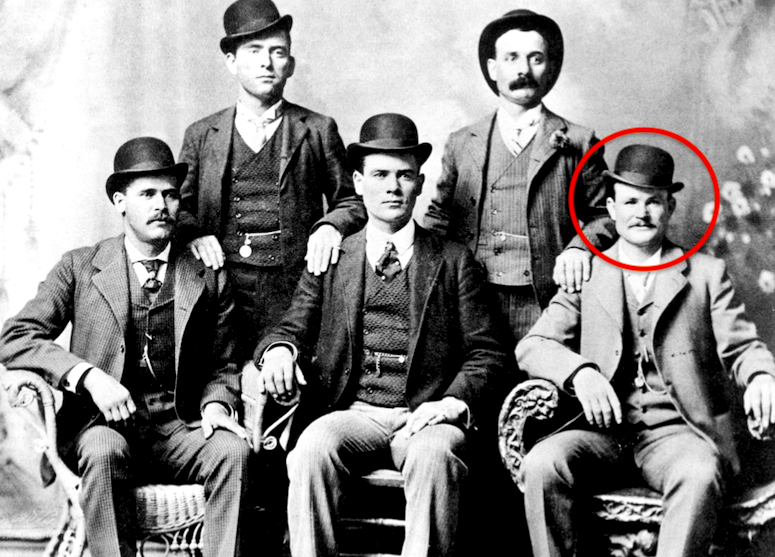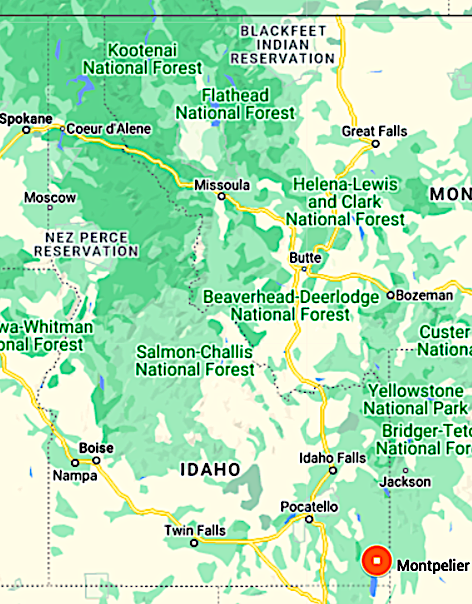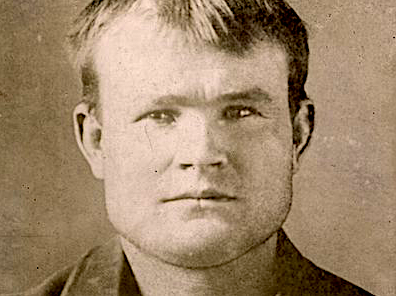
On the afternoon of August 13, 1896, three men rode their horses across the town of Montpelier in Bear Lake County, Idaho towards Washington Street. Across the street from the Bank of Montpelier, they dismounted and tied their horses on a hitching rack. Two of the men casually walked to the bank like normal customers. They were about to withdraw money they did not own – of course, violently.
The two men who entered the bank were Butch Cassidy and Elzy Lay while Bob Meeks remained outside as a lookout and to ready the horses for escape. Known as the Wild Bunch Gang, they had considered robbing other banks but the Bank of Montpelier was chosen because of its proximity to the Utah and Wyoming state lines. Due to jurisdictional disputes when law enforcement crossed borders, they reckoned that their escape would be much easier.
The Robbers
The three bandits were part of the Wild Bunch gang, a group that was famous for robbing trains out in the Old West. The gang’s hideout was in caves found in the Hole-in-the-Wall Pass in Johnson County, Wyoming.
Butch Cassidy (born Robert LeRoy Parker), the gang leader, was born in Beaver, Utah and while in his teens had met Mike Cassidy, a local ranch hand. Mike taught him how to use a gun, ride horses and to rustle livestock. This impressed him so much that he later took up his last name.
He added the word Butch, a nickname he got while working for a butcher in Rock Springs, Wyoming. He had been released earlier that year from Wyoming State Penitentiary after an 18-month sentence for the purchase of a stolen horse.
Elzy Lay was an outlaw who became friends with Butch Cassidy after they met in the autumn of 1889. Bob Meeks on the other hand was a rancher and rustler who associated closely with Cassidy and was involved in several robberies.
The Robbery’s Premise
In the summer of 1896, Cassidy was broke and yet he needed money to help his friend Matt Warner to hire a lawyer for a murder case he was facing. Warner, who was also a friend to Elzy Lay (the three were members of another gang known as the Robber’s Roost), was a rancher and farmer as well as a cattle rustler and bank robber. He had been charged with killing two men north of Vernal, Utah. His employer had instructed him to intimidate the two prospectors away from a mining claim but the confrontation quickly escalated and Warner killed them in what he referred to as self defense.
The murdered men were well liked by the local population and Warner’s actions were not taken kindly. That’s how he found himself hauled to a jail cell in Ogden, Utah. To effectively defend himself against a murder charge, Warner needed to hire a top defense lawyer but did not have the money. He immediately sent out a plea for help to Butch Cassidy, his longtime friend.

Montpelier is located in the extreme southeast corner or Idaho.
The Robbery
On the steps of the Bank of Montpelier were G.C. Gray, a Cashier with the bank, and his friend Ed Hoover. They were preoccupied in their animated conversation when Cassidy and Lay approached and were quickly ushered into the bank at gunpoint. Everyone in the bank was ordered to put their hands up and stand with their faces to the wall including the teller Bud McIntosh.
Lay watched over the hostages while Cassidy scooped the money into a gunny sack. McIntosh, who was struck by Lay across the face with a gun for hesitating to show them where the money was stored, managed to get a glimpse through the window of the man waiting on the horses.
After the holdup, the trio mounted their horses and rode off towards Canyon Road, crossed Thomas’ Fork and headed for the mountains. Before the alarm was raised, the gang already had a considerable head start and after several miles changed horses. The gang had long running, Robin Hood-like associations with ranchers who in turn supplied them with fresh horses, beef and other supplies. They stationed fresh horses at intervals along their escape route, giving them a huge advantage over their pursuers.
The first deputy to respond to the alarm rode on a bicycle and gave chase for a few miles before being joined by others but the gang was long gone.

Butch Cassidy was one of the most feared outlaws of the Old West. He was involved with over a dozen robberies throughout Idaho, Montana, Wyoming and Nevada over a span of just a few years. He was likely a gang member in many other robberies as well.
Aftermath
The trio stole a total of $7,000 (more than $900,000 in 2022 currency) and when Matt Warner’s murder trial started in September, 1896, four top lawyers from Vernal, Rock Springs, and Salt Lake City arrived to defend him. They vigorously argued his self defense plea and even threatened to launch a separate lawsuit.
Eventually the charges were changed from murder to voluntary manslaughter and Warner was sentenced to five years in prison. The funds from the robbery had saved him from the hangman. He ended up serving only three years.
Several months after the robbery, Meeks was involved in a botched holdup of a store in Fort Bridger, Wyoming. After being arrested, he was positively Identified by cashier McIntosh from the Bank of Montpelier robbery and sentenced to 35 years at Idaho State Penitentiary in Boise. Cassidy and Lay managed to hide from authorities and the gang left an indelible mark as one of the most notorious and famous outlaws in American history.
Asked about the Bank of Montpelier robbery, McIntosh, the teller, blamed the number “13” quipping that “the robbery occurred on the 13th day of the month, at 13 minutes after the hour of 3:00 p.m. and after the 13th deposit had been made at a sum of $13.00.”
Butch Cassidy’s Buried Treasures
There are rumors and legends of buried treasure associated with the notorious outlaw Butch Cassidy. There is no concrete evidence to support these claims, but considering the outlaw that he was, it is certainly probable that he buried some of his ill-gotten gains.
One of the most famous tales involves a cache of gold and silver coins acquired from a train robbery that Butch Cassidy buried near the Robber’s Roost hideout in southeastern Utah. Some versions of the legend claim that the treasure is still buried there, waiting to be discovered.
Another popular tale involves a buried cache of gold that Cassidy allegedly buried somewhere in Wyoming. According to the story, Cassidy and his gang robbed a bank in Wyoming and then buried the gold in the countryside. Some versions of the legend claim that the treasure is still hidden somewhere in the state. As of this date, the treasure has never been found.
While legends of buried loot are always intriguing, there isn’t concrete evidence to support them. Many people have searched for Butch Cassidy’s treasure over the years, but no one has been able to locate any of them. It’s possible that these stories are simply myths and legends that have been passed down over time, rather than true accounts of buried treasure.
The Portneuf Stage Coach Robbery in Eastern Idaho
Ruggles Brother’s Treasure – Stolen Gold in Redding, California
The Earliest Uses of Gold in History







